If you want to use the Citrix XenServer hypervisor to run guest virtual
machines, install XenServer 6.0 or XenServer 6.0.2 on the host(s) in
your cloud. For an initial installation, follow the steps below. If you
have previously installed XenServer and want to upgrade to another
version, see Upgrading XenServer Versions.
Install CloudStack XenServer Support Package (CSP)
(Optional)
To enable security groups, elastic load balancing, and elastic IP on
XenServer, download and install the CloudStack XenServer Support Package
(CSP). After installing XenServer, perform the following additional
steps on each XenServer host.
For XenServer 6.1:
CSP functionality is already present in XenServer 6.1
Run the below command
xe-switch-network-backend bridge
update sysctl.conf with the following
net.bridge.bridge-nf-call-iptables = 1
net.bridge.bridge-nf-call-ip6tables = 0
net.bridge.bridge-nf-call-arptables = 1
$ sysctl -p /etc/sysctl.conf
For XenServer 6.0.2, 6.0, 5.6 SP2:
Download the CSP software onto the XenServer host from one of the
following links:
For XenServer 6.0.2:
http://download.cloud.com/releases/3.0.1/XS-6.0.2/xenserver-cloud-supp.tgz
For XenServer 5.6 SP2:
http://download.cloud.com/releases/2.2.0/xenserver-cloud-supp.tgz
For XenServer 6.0:
http://download.cloud.com/releases/3.0/xenserver-cloud-supp.tgz
Extract the file:
# tar xf xenserver-cloud-supp.tgz
Run the following script:
# xe-install-supplemental-pack xenserver-cloud-supp.iso
If the XenServer host is part of a zone that uses basic networking,
disable Open vSwitch (OVS):
# xe-switch-network-backend bridge
Restart the host machine when prompted.
The XenServer host is now ready to be added to CloudStack.
Primary Storage Setup for XenServer
CloudStack natively supports NFS, iSCSI and local storage. If you are
using one of these storage types, there is no need to create the
XenServer Storage Repository (“SR”).
If, however, you would like to use storage connected via some other
technology, such as FiberChannel, you must set up the SR yourself. To do
so, perform the following steps. If you have your hosts in a XenServer
pool, perform the steps on the master node. If you are working with a
single XenServer which is not part of a cluster, perform the steps on
that XenServer.
Connect FiberChannel cable to all hosts in the cluster and to the
FiberChannel storage host.
Rescan the SCSI bus. Either use the following command or use
XenCenter to perform an HBA rescan.
Repeat step 2 on every host.
Check to be sure you see the new SCSI disk.
# ls /dev/disk/by-id/scsi-360a98000503365344e6f6177615a516b -l
The output should look like this, although the specific file name
will be different (scsi-<scsiID>):
lrwxrwxrwx 1 root root 9 Mar 16 13:47
/dev/disk/by-id/scsi-360a98000503365344e6f6177615a516b -> ../../sdc
Repeat step 4 on every host.
On the storage server, run this command to get a unique ID for the
new SR.
The output should look like this, although the specific ID will be
different:
e6849e96-86c3-4f2c-8fcc-350cc711be3d
Create the FiberChannel SR. In name-label, use the unique ID you just
generated.
# xe sr-create type=lvmohba shared=true
device-config:SCSIid=360a98000503365344e6f6177615a516b
name-label="e6849e96-86c3-4f2c-8fcc-350cc711be3d"
This command returns a unique ID for the SR, like the following
example (your ID will be different):
7a143820-e893-6c6a-236e-472da6ee66bf
To create a human-readable description for the SR, use the following
command. In uuid, use the SR ID returned by the previous command. In
name-description, set whatever friendly text you prefer.
# xe sr-param-set uuid=7a143820-e893-6c6a-236e-472da6ee66bf name-description="Fiber Channel storage repository"
Make note of the values you will need when you add this storage to
CloudStack later (see “Add Primary Storage”). In the Add Primary Storage
dialog, in Protocol, you will choose PreSetup. In SR Name-Label, you
will enter the name-label you set earlier (in this example,
e6849e96-86c3-4f2c-8fcc-350cc711be3d).
(Optional) If you want to enable multipath I/O on a FiberChannel SAN,
refer to the documentation provided by the SAN vendor.
iSCSI Multipath Setup for XenServer (Optional)
When setting up the storage repository on a Citrix XenServer, you can
enable multipath I/O, which uses redundant physical components to
provide greater reliability in the connection between the server and the
SAN. To enable multipathing, use a SAN solution that is supported for
Citrix servers and follow the procedures in Citrix documentation. The
following links provide a starting point:
You can also ask your SAN vendor for advice about setting up your Citrix
repository for multipathing.
Make note of the values you will need when you add this storage to the
CloudStack later (see “Add Primary Storage”). In the Add Primary Storage
dialog, in Protocol, you will choose PreSetup. In SR Name-Label, you will
enter the same name used to create the SR.
If you encounter difficulty, address the support team for the SAN
provided by your vendor. If they are not able to solve your issue, see
Contacting Support.
Physical Networking Setup for XenServer
Once XenServer has been installed, you may need to do some additional
network configuration. At this point in the installation, you should
have a plan for what NICs the host will have and what traffic each NIC
will carry. The NICs should be cabled as necessary to implement your
plan.
If you plan on using NIC bonding, the NICs on all hosts in the cluster
must be cabled exactly the same. For example, if eth0 is in the private
bond on one host in a cluster, then eth0 must be in the private bond on
all hosts in the cluster.
The IP address assigned for the management network interface must be
static. It can be set on the host itself or obtained via static DHCP.
CloudStack configures network traffic of various types to use different
NICs or bonds on the XenServer host. You can control this process and
provide input to the Management Server through the use of XenServer
network name labels. The name labels are placed on physical interfaces
or bonds and configured in CloudStack. In some simple cases the name
labels are not required.
When configuring networks in a XenServer environment, network traffic
labels must be properly configured to ensure that the virtual interfaces
are created by CloudStack are bound to the correct physical device. The
name-label of the XenServer network must match the XenServer traffic
label specified while creating the CloudStack network. This is set by
running the following command:
xe network-param-set uuid=<network id> name-label=<CloudStack traffic label>
Configuring Public Network with a Dedicated NIC for XenServer (Optional)
CloudStack supports the use of a second NIC (or bonded pair of NICs,
described in NIC Bonding for XenServer (Optional)) for the public network. If
bonding is not used, the public network can be on any NIC and can be on
different NICs on the hosts in a cluster. For example, the public
network can be on eth0 on node A and eth1 on node B. However, the
XenServer name-label for the public network must be identical across all
hosts. The following examples set the network label to “cloud-public”.
After the management server is installed and running you must configure
it with the name of the chosen network label (e.g. “cloud-public”); this
is discussed in “Management Server Installation”.
If you are using two NICs bonded together to create a public network,
see NIC Bonding for XenServer (Optional).
If you are using a single dedicated NIC to provide public network
access, follow this procedure on each new host that is added to
CloudStack before adding the host.
Run xe network-list and find the public network. This is usually
attached to the NIC that is public. Once you find the network make
note of its UUID. Call this <UUID-Public>.
Run the following command.
# xe network-param-set name-label=cloud-public uuid=<UUID-Public>
Configuring Multiple Guest Networks for XenServer (Optional)
CloudStack supports the use of multiple guest networks with the
XenServer hypervisor. Each network is assigned a name-label in
XenServer. For example, you might have two networks with the labels
“cloud-guest” and “cloud-guest2”. After the management server is
installed and running, you must add the networks and use these labels so
that CloudStack is aware of the networks.
Follow this procedure on each new host before adding the host to
CloudStack:
Run xe network-list and find one of the guest networks. Once you find
the network make note of its UUID. Call this <UUID-Guest>.
Run the following command, substituting your own name-label and uuid
values.
# xe network-param-set name-label=<cloud-guestN> uuid=<UUID-Guest>
Repeat these steps for each additional guest network, using a
different name-label and uuid each time.
Separate Storage Network for XenServer (Optional)
You can optionally set up a separate storage network. This should be
done first on the host, before implementing the bonding steps below.
This can be done using one or two available NICs. With two NICs bonding
may be done as above. It is the administrator’s responsibility to set up
a separate storage network.
Give the storage network a different name-label than what will be given
for other networks.
For the separate storage network to work correctly, it must be the only
interface that can ping the primary storage device’s IP address. For
example, if eth0 is the management network NIC, ping -I eth0 <primary
storage device IP> must fail. In all deployments, secondary storage
devices must be pingable from the management network NIC or bond. If a
secondary storage device has been placed on the storage network, it must
also be pingable via the storage network NIC or bond on the hosts as
well.
You can set up two separate storage networks as well. For example, if
you intend to implement iSCSI multipath, dedicate two non-bonded NICs to
multipath. Each of the two networks needs a unique name-label.
If no bonding is done, the administrator must set up and name-label the
separate storage network on all hosts (masters and slaves).
Here is an example to set up eth5 to access a storage network on
172.16.0.0/24.
# xe pif-list host-name-label='hostname' device=eth5
uuid(RO): ab0d3dd4-5744-8fae-9693-a022c7a3471d
device ( RO): eth5
#xe pif-reconfigure-ip DNS=172.16.3.3 gateway=172.16.0.1 IP=172.16.0.55 mode=static netmask=255.255.255.0 uuid=ab0d3dd4-5744-8fae-9693-a022c7a3471d
NIC Bonding for XenServer (Optional)
XenServer supports Source Level Balancing (SLB) NIC bonding. Two NICs
can be bonded together to carry public, private, and guest traffic, or
some combination of these. Separate storage networks are also possible.
Here are some example supported configurations:
- 2 NICs on private, 2 NICs on public, 2 NICs on storage
- 2 NICs on private, 1 NIC on public, storage uses management network
- 2 NICs on private, 2 NICs on public, storage uses management network
- 1 NIC for private, public, and storage
All NIC bonding is optional.
XenServer expects all nodes in a cluster will have the same network
cabling and same bonds implemented. In an installation the master will
be the first host that was added to the cluster and the slave hosts will
be all subsequent hosts added to the cluster. The bonds present on the
master set the expectation for hosts added to the cluster later. The
procedure to set up bonds on the master and slaves are different, and
are described below. There are several important implications of this:
- You must set bonds on the first host added to a cluster. Then you
must use xe commands as below to establish the same bonds in the
second and subsequent hosts added to a cluster.
- Slave hosts in a cluster must be cabled exactly the same as the
master. For example, if eth0 is in the private bond on the master, it
must be in the management network for added slave hosts.
Management Network Bonding
The administrator must bond the management network NICs prior to adding
the host to CloudStack.
Creating a Private Bond on the First Host in the Cluster
Use the following steps to create a bond in XenServer. These steps
should be run on only the first host in a cluster. This example creates
the cloud-private network with two physical NICs (eth0 and eth1) bonded
into it.
Find the physical NICs that you want to bond together.
# xe pif-list host-name-label='hostname' device=eth0
# xe pif-list host-name-label='hostname' device=eth1
These command shows the eth0 and eth1 NICs and their UUIDs.
Substitute the ethX devices of your choice. Call the UUID’s returned
by the above command slave1-UUID and slave2-UUID.
Create a new network for the bond. For example, a new network with
name “cloud-private”.
This label is important. CloudStack looks for a network by a name
you configure. You must use the same name-label for all hosts in the
cloud for the management network.
# xe network-create name-label=cloud-private
# xe bond-create network-uuid=[uuid of cloud-private created above]
pif-uuids=[slave1-uuid],[slave2-uuid]
Now you have a bonded pair that can be recognized by CloudStack as the
management network.
Public Network Bonding
Bonding can be implemented on a separate, public network. The
administrator is responsible for creating a bond for the public network
if that network will be bonded and will be separate from the management
network.
Creating a Public Bond on the First Host in the Cluster
These steps should be run on only the first host in a cluster. This
example creates the cloud-public network with two physical NICs (eth2
and eth3) bonded into it.
Find the physical NICs that you want to bond together.
# xe pif-list host-name-label='hostname' device=eth2
# xe pif-list host-name-label='hostname' device=eth3
These command shows the eth2 and eth3 NICs and their UUIDs.
Substitute the ethX devices of your choice. Call the UUID’s returned
by the above command slave1-UUID and slave2-UUID.
Create a new network for the bond. For example, a new network with
name “cloud-public”.
This label is important. CloudStack looks for a network by a name
you configure. You must use the same name-label for all hosts in the
cloud for the public network.
# xe network-create name-label=cloud-public
# xe bond-create network-uuid=[uuid of cloud-public created above]
pif-uuids=[slave1-uuid],[slave2-uuid]
Now you have a bonded pair that can be recognized by CloudStack as the
public network.
Adding More Hosts to the Cluster
With the bonds (if any) established on the master, you should add
additional, slave hosts. Run the following command for all additional
hosts to be added to the cluster. This will cause the host to join the
master in a single XenServer pool.
# xe pool-join master-address=[master IP] master-username=root
master-password=[your password]
Complete the Bonding Setup Across the Cluster
With all hosts added to the pool, run the cloud-setup-bond script. This
script will complete the configuration and set up of the bonds across
all hosts in the cluster.
Copy the script from the Management Server in
/usr/share/cloudstack-common/scripts/vm/hypervisor/xenserver/cloud-setup-bonding.sh
to the master host and ensure it is executable.
Run the script:
# ./cloud-setup-bonding.sh
Now the bonds are set up and configured properly across the cluster.

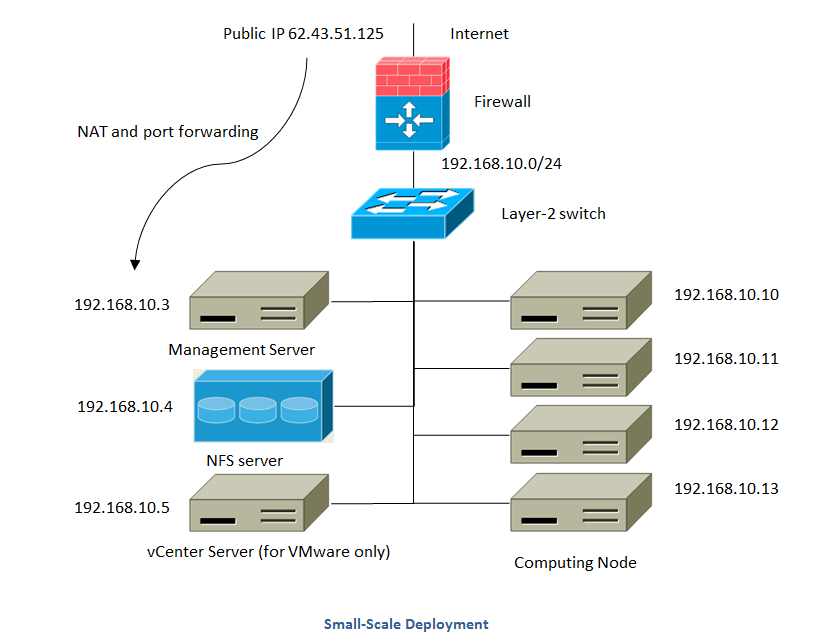
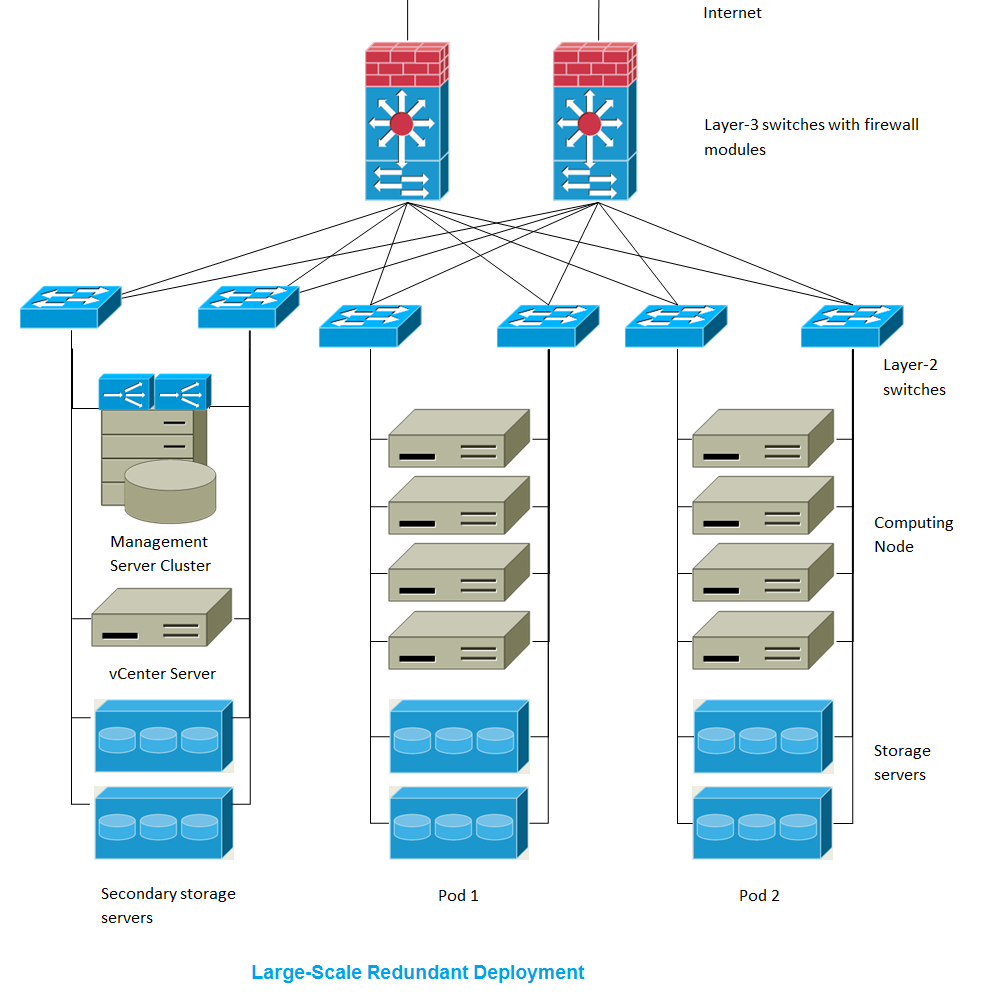

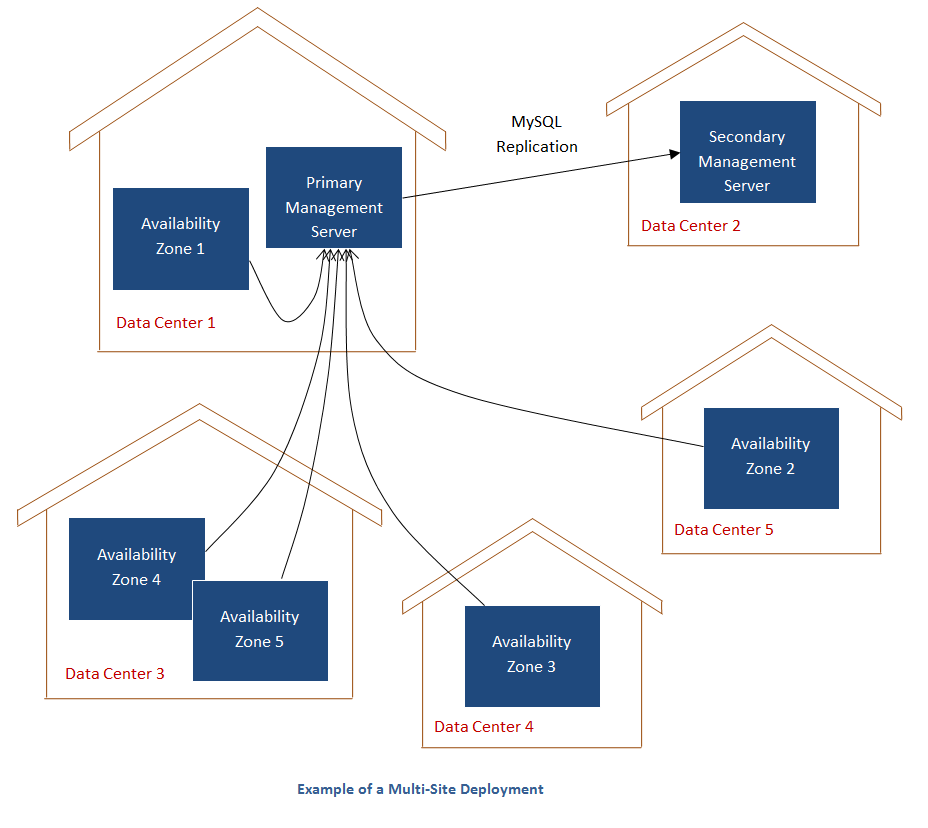
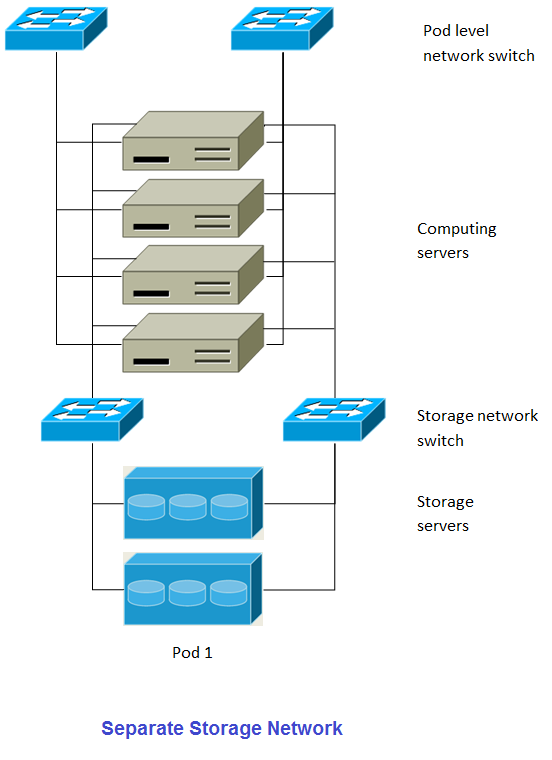
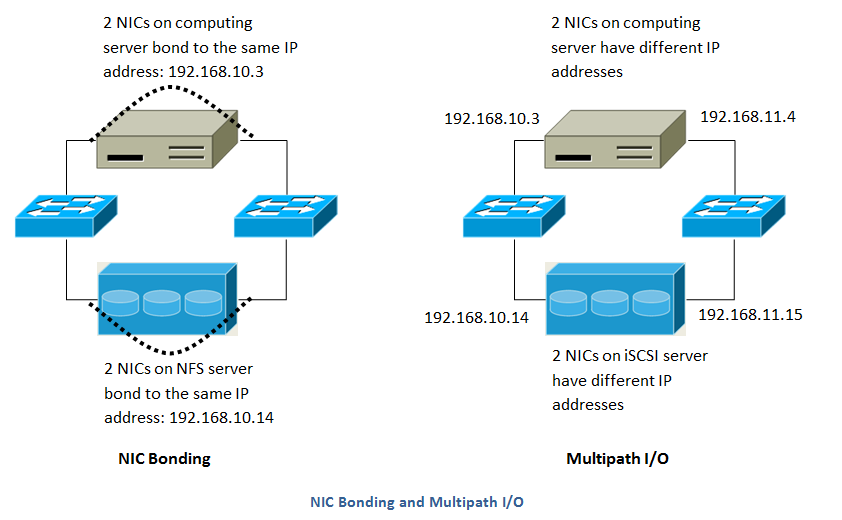
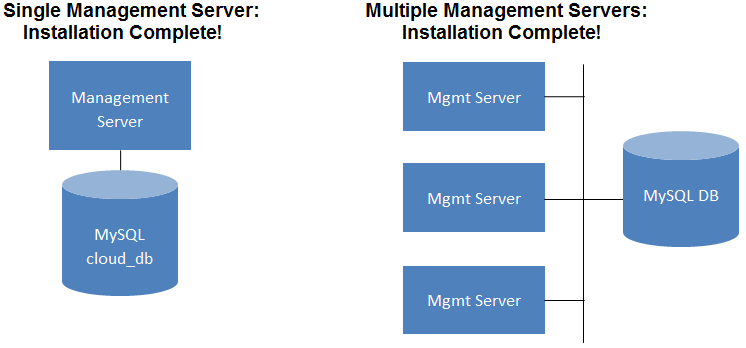
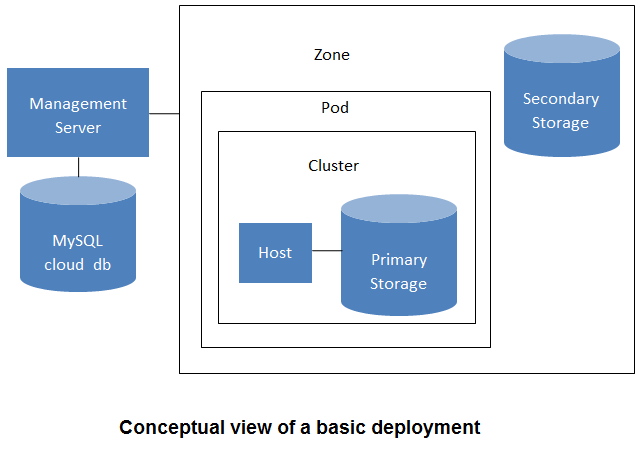
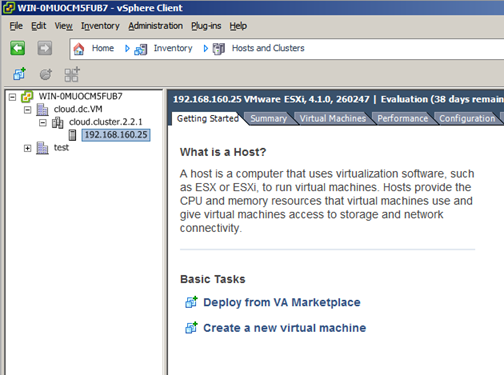
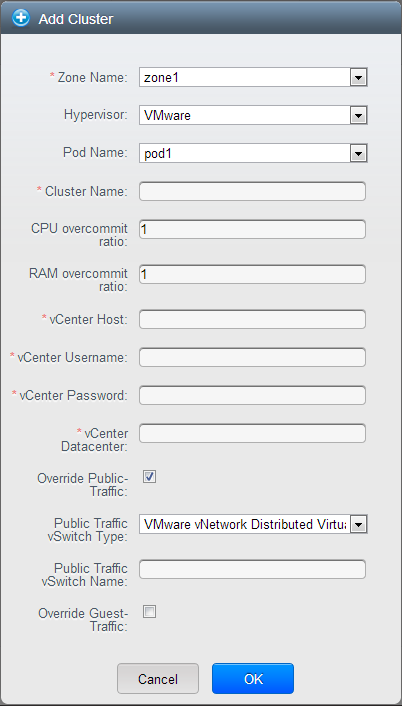

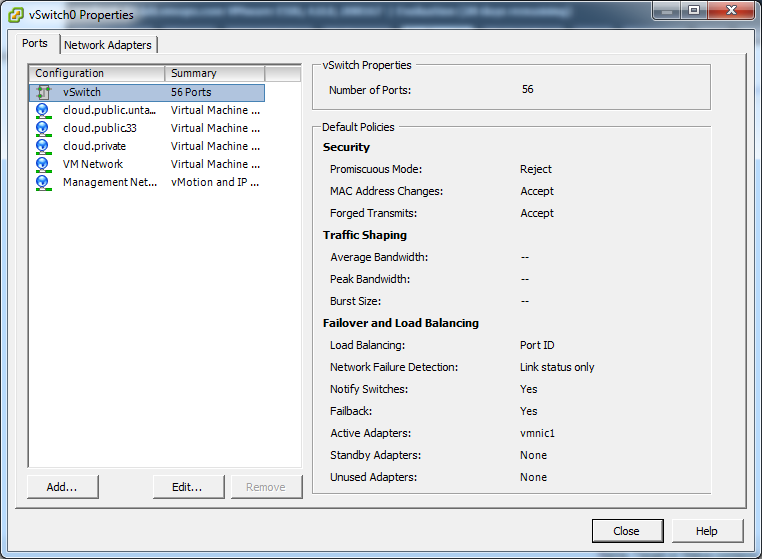
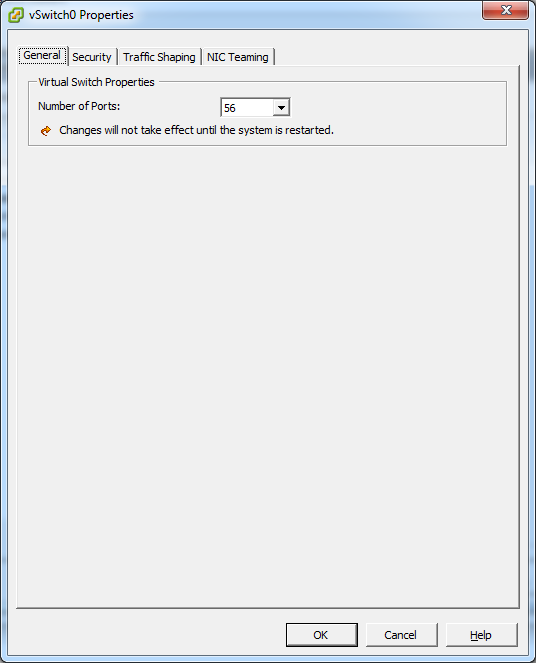

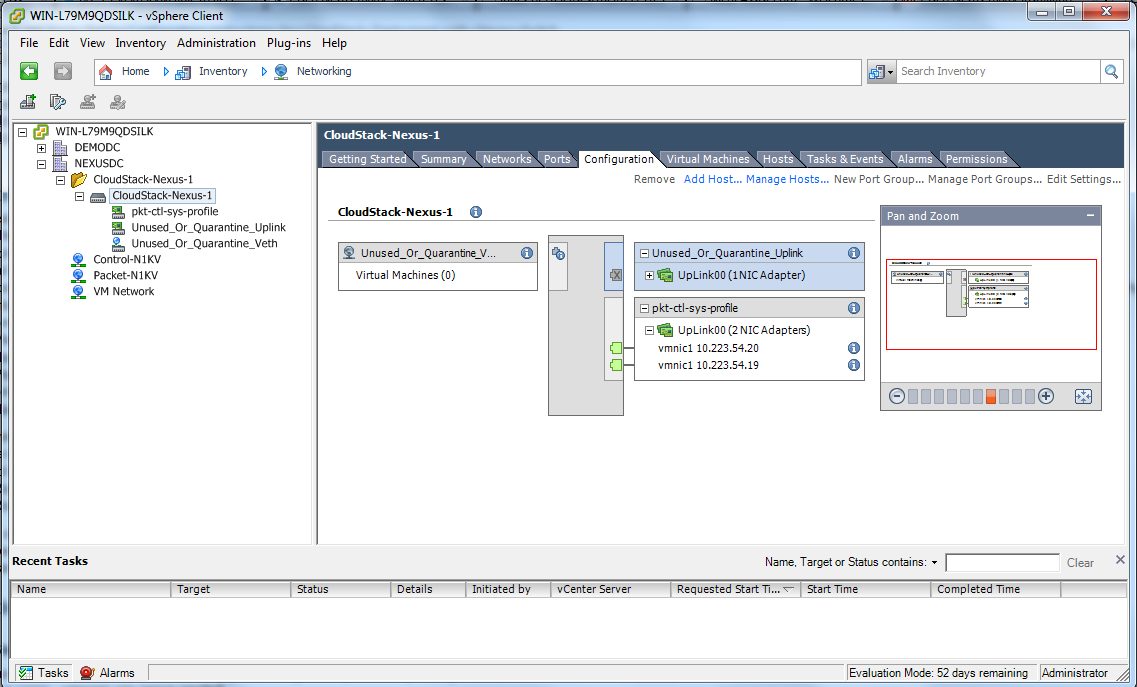
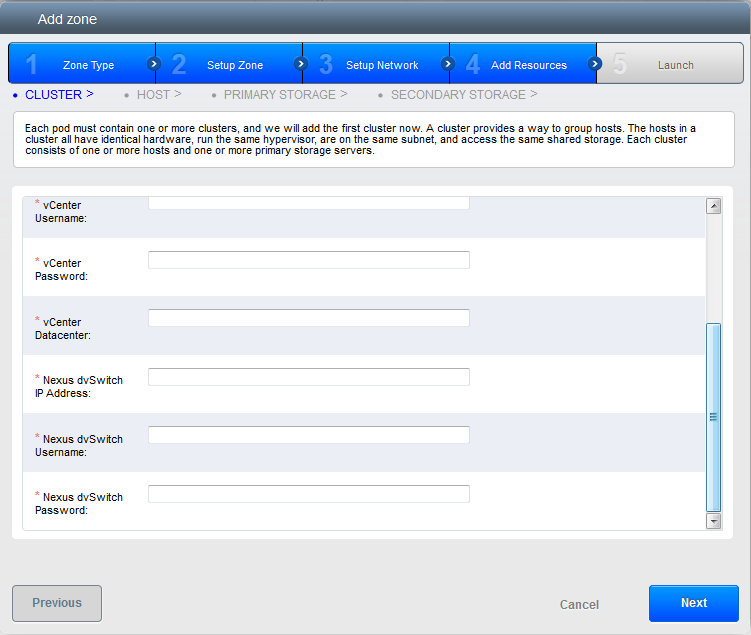





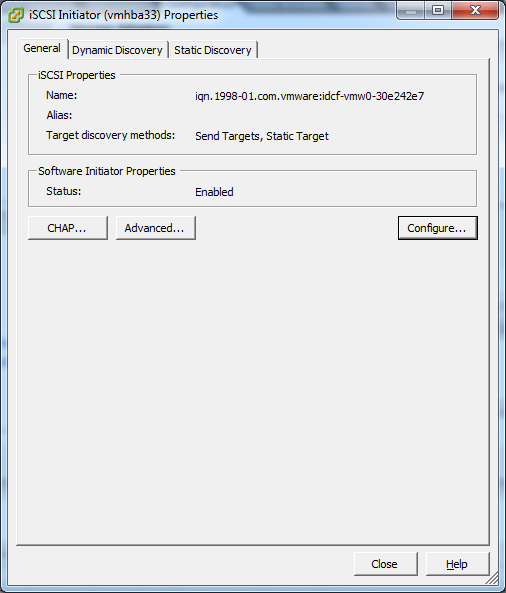
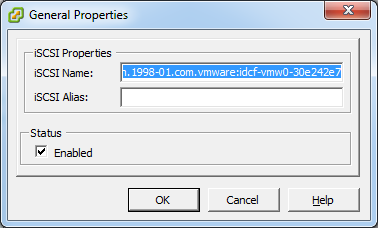
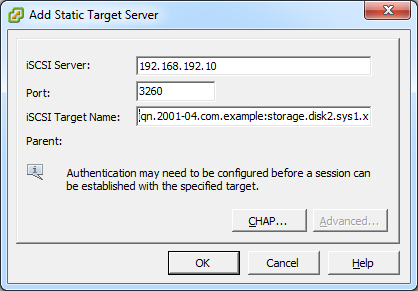
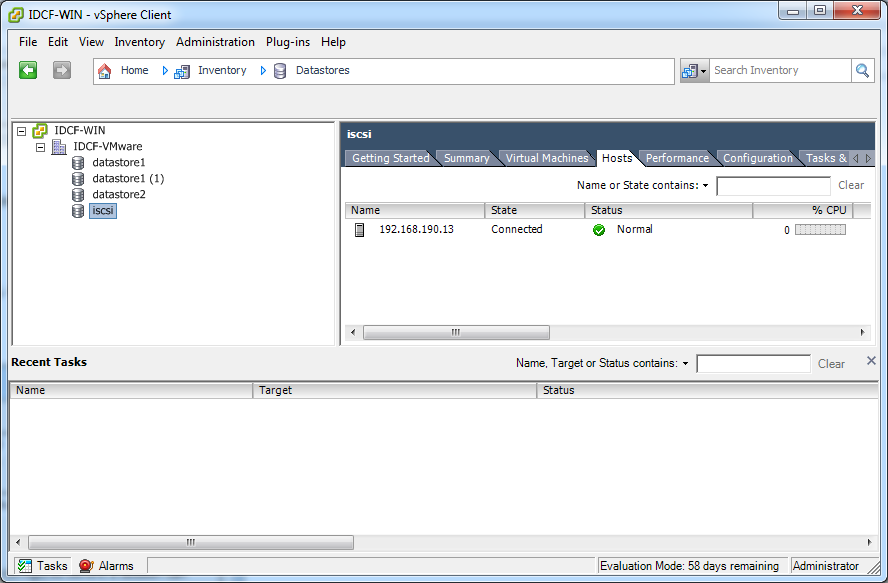

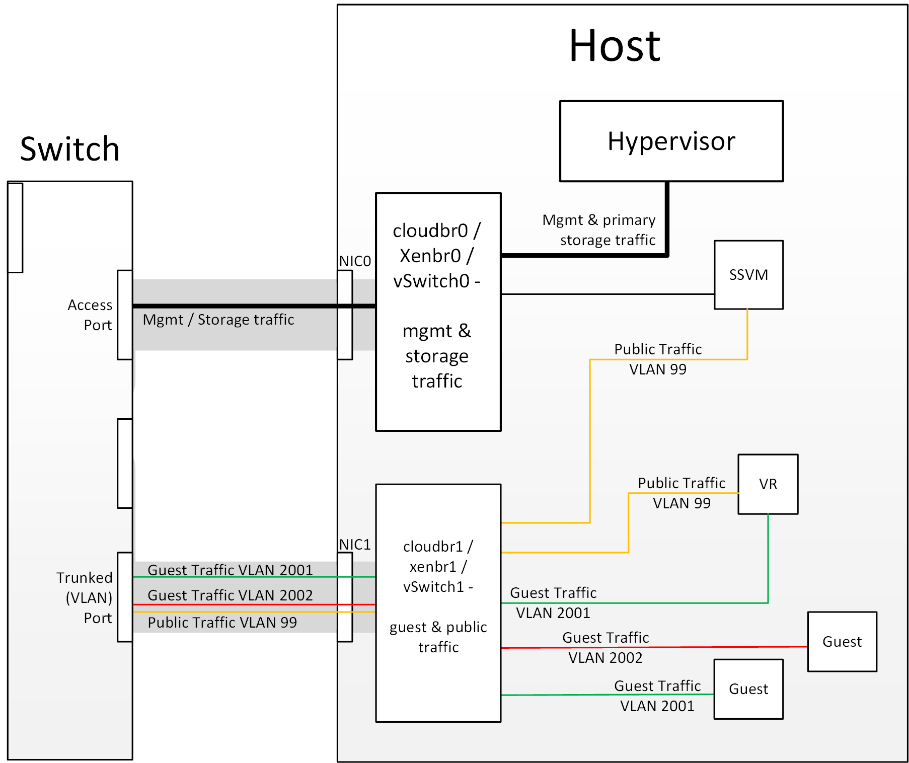 Figure 1: Hypervisor communications
Figure 1: Hypervisor communications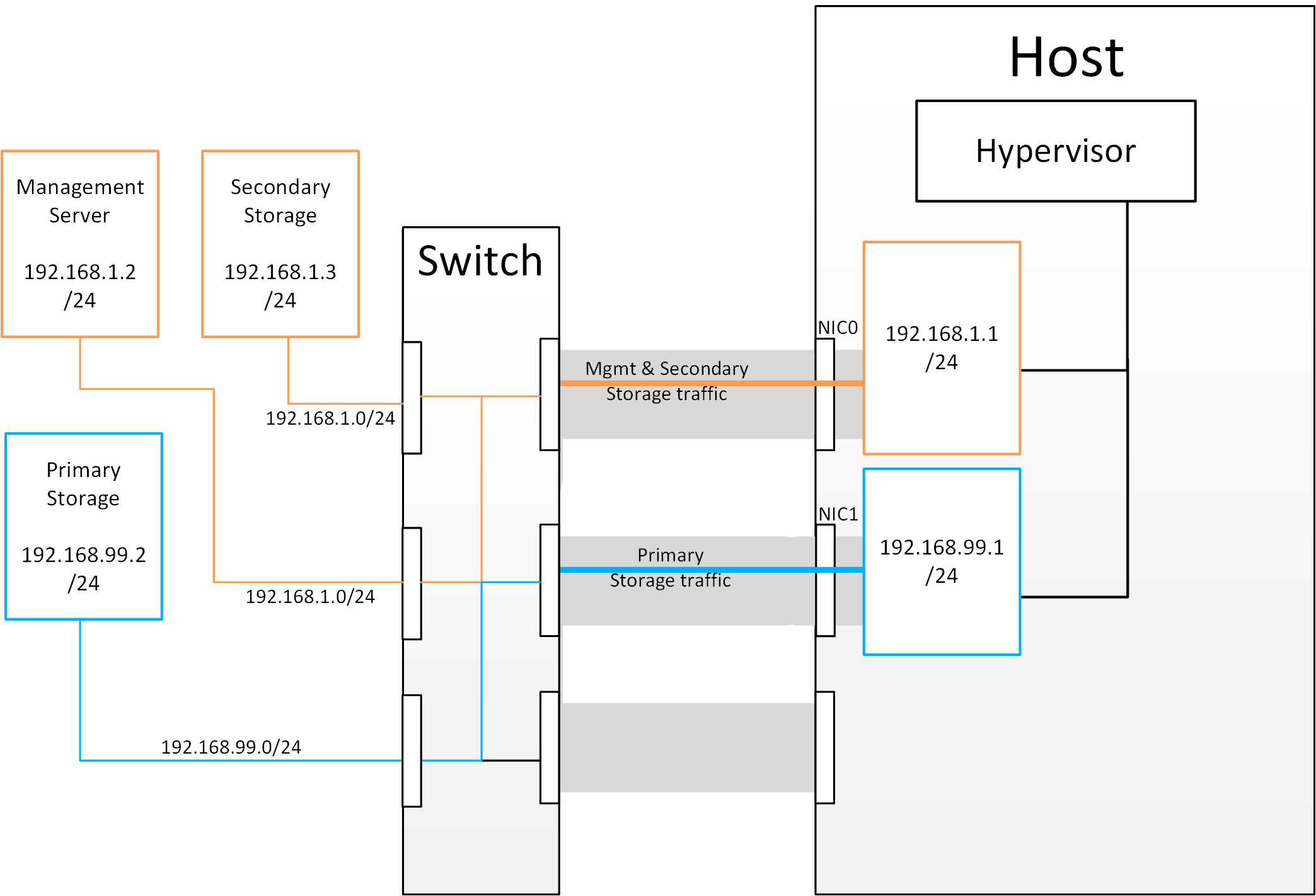 Figure 2: Subnetting of Storage Traffic
Figure 2: Subnetting of Storage Traffic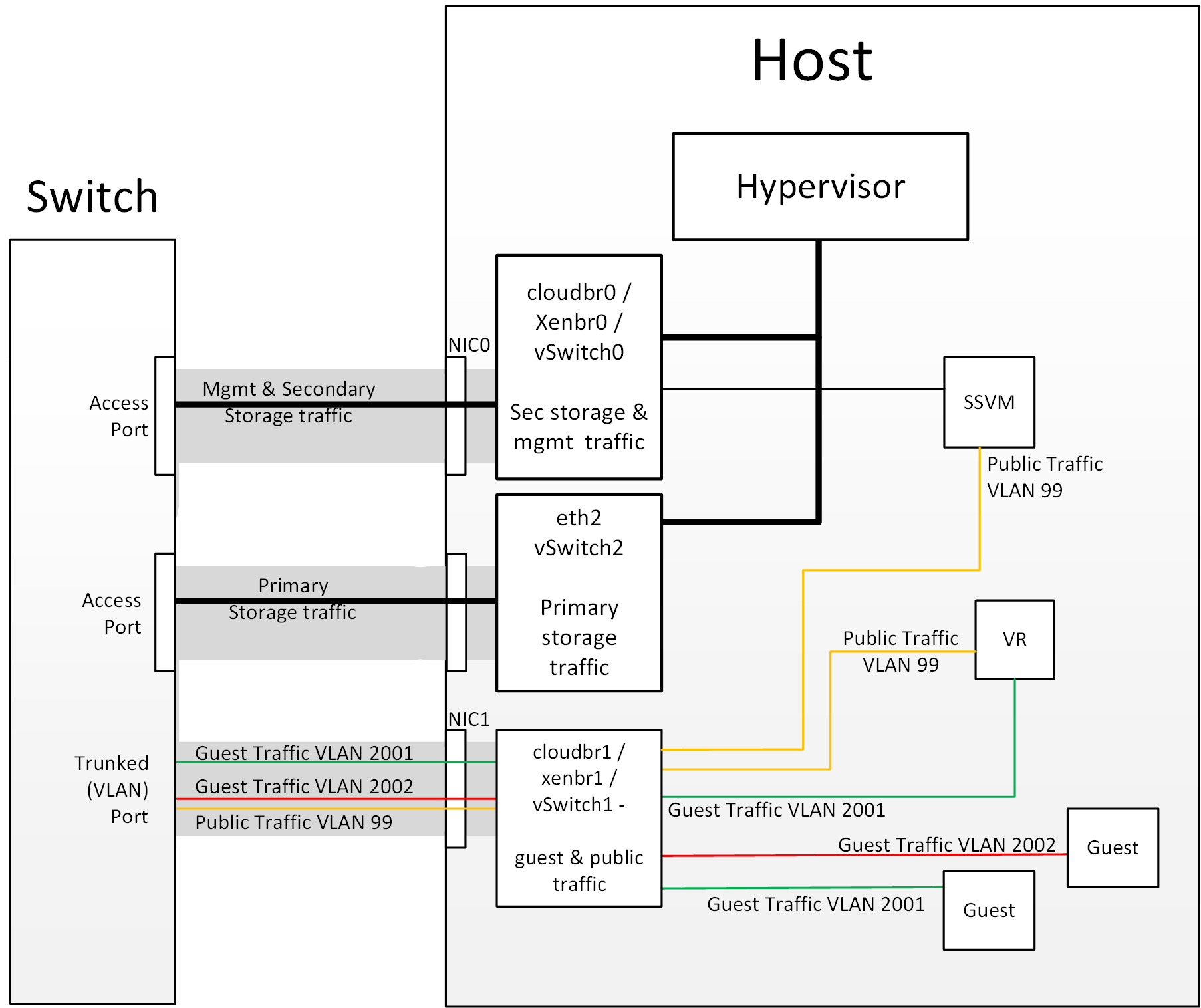 Figure 3: Hypervisor Communications with Separated Storage Traffic
Figure 3: Hypervisor Communications with Separated Storage Traffic
